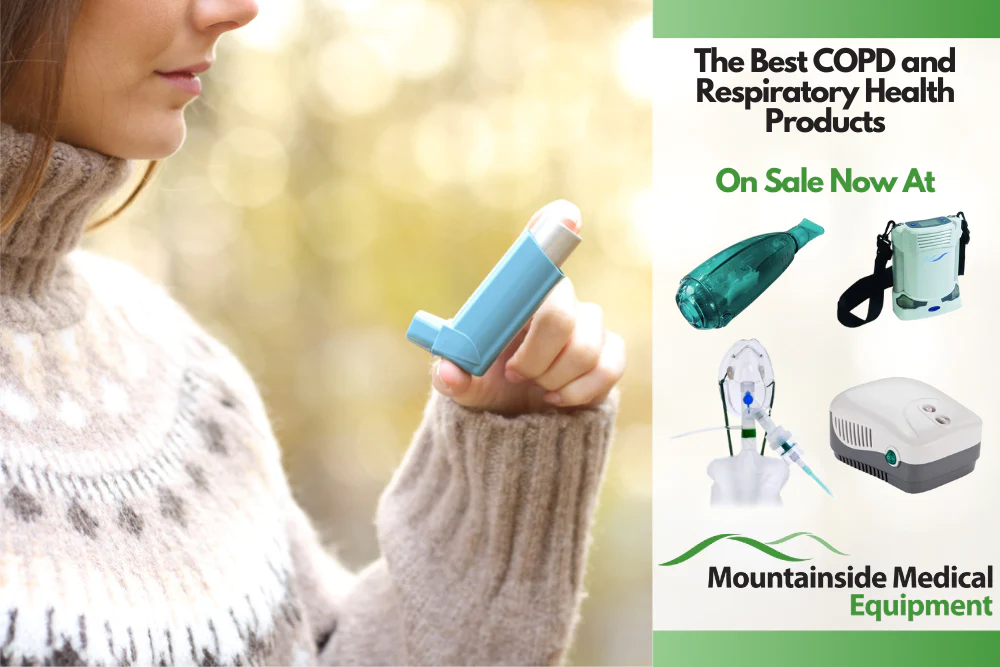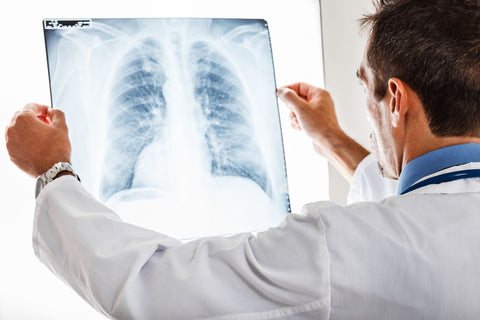on US orders over $100
on all US orders over $100

Chronic Obstructive Pulmonary Disease (COPD) is a progressive disease that makes breathing difficult and gets worse over time. COPD can cause coughing that produces large amounts of mucus, wheezing, shortness of breath, chest tightness, and other symptoms.
COPD is a major cause of disability, and it is the 4th leading cause of death in the US. Currently, 16 million people are diagnosed with COPD, and many more have the disease and don't even know it.
Most people who have COPD are at least 40 years of age when symptoms begin.COPD develops slowly, with symptoms worsening over time and limiting your ability to do routine activities.
Causes of COPD include:
Some people who have asthma, a chronic lung disease that inflames and narrows the airways, can develop COPD. Asthma is a chronic lung disease that inflames and narrows the airways.

To understand COPD, it helps to understand how the lungs work. The air that you breathe goes down your windpipe into the airways, tubes in your lungs also called bronchial tubes. Within the lungs, your bronchial tubes branch many times into thousands of smaller, thinner tubes called bronchioles. These tubes end in bunches of tiny round air sacs called alveoli.
Small blood vessels called capillaries run along the walls of the air sacs. When air reaches the air sacs, oxygen passes through the air sac walls into the blood of the capillaries. At the same time, a waste product called carbon dioxide (CO2) gas, moves from the capillaries into the air sacs. This process is called gas exchange, and brings in oxygen for the body to use for vital functions and removes C02.
The airways and air sacs are elastic or stretchy. When you breathe in, each air sac fills up with air. When you breathe out, the air sacs deflate and the air goes out. In COPD, less air flows in and out of the airways due to:
COPD comprises two main conditions: emphysema and chronic bronchitis.
In emphysema, the walls between many of the air sacs are damaged. As a result, the air sacs lose their shape and become floppy. This damage can destroy the walls of the air sacs, leading to fewer and larger air sacs, instead of many tiny ones. If this happens, the amount of gas exchange in the lungs is reduced.
In chronic bronchitis, the lining of the airways stays constantly irritated and inflamed, causing the lining to swell. A large amount of thick mucus forms in the airways, making it difficult to breathe. Most people who have COPD have both emphysema and chronic bronchitis, but the severity of each condition varies from person to person.

At first, COPD may cause no symptoms, or only mild symptoms. As the disease progresses, symptoms usually become more severe. Common symptoms of COPD include:
Severe COPD may have symptoms that affect other parts of your body:
Seek emergency care if you experience the following:

COPD has no cure but lifestyle changes and regular treatment can help you feel better, remain active, and slow the progression of the disease. The goals of COPD treatment include:
COPD treatment options may include:

While COPD doesn't currently have a cure, there are steps you can take to manage your symptoms, slow the progression of the disease, and live comfortably:
Quit Smoking and Avoid Lung Irritants: If you smoke, quit. Also, try to avoid lung irritants that can contribute to COPD, and keep these irritants out of your home. If your home is getting painted, or sprayed for insects, have it done when you can stay away for a while. If possible, keep your windows closed and stay at home when there is a lot of air pollution or dusts outside.
Get Ongoing Care: If you have COPD, it's important to receive ongoing medical care. Take all your medicines as your doctor prescribes and make sure to refill your prescriptions before they run out. Bring a list of all of the medicines you are taking when you have medical checkups. Talk with your doctor about whether and when you should get the flu and pneumonia vaccines. Also, as your doctor about other diseases for which COPD may increase your risk.
Manage Your Lifestyle: Do activities slowly. Put items you use often in easy-to-reach places. Find simple ways to cook, clean, and do other chores. Ask for help in making things more accessible in your house, so that you won't need to climb stairs as often. Keep your clothes loose, and wear clothes and shoes that are easy to put on and take off. Depending on how severe your disease is, you may want to ask your family and friends for help with daily tasks.
Prepare for Emergencies: If you have COPD, know when and where to seek help for your symptoms. Get emergency care if you have severe symptoms, worsening symptoms, or signs of an infection. Keep phone numbers handy for your doctor, hospital, and someone who can take you for medical care. You also should have hand directions to the doctor's office and hospital, as well as a list of all medications you are taking.
Emotional Issues and Support: Living with COPD may cause fear, anxiety, depression, and stress. Talk about how you feel with your healthcare team. Talking to a professional counselor also might help. If you are depressed, your doctor may recommend medicines or other treatments that can improve your quality of life. Joining a patient support group may help you adjust to living with COPD. You can see how other people who have the same symptoms have coped with them. Support from family and friends also can help relieve stress and anxiety. Let your loved ones know how you feel and what they can do to help you.
Need respiratory products to improve your breathing quality and make life more comfortable? Visit Mountainside Medical Equipment! We've got the best in quality respiratory products including everything from nebulizers to PEP therapy devices. Click this link to visit our asthma product collection!
Leave a comment